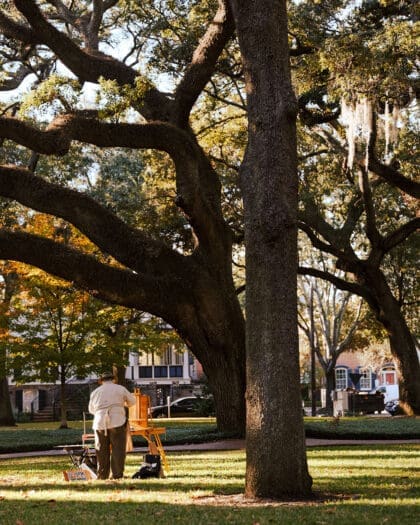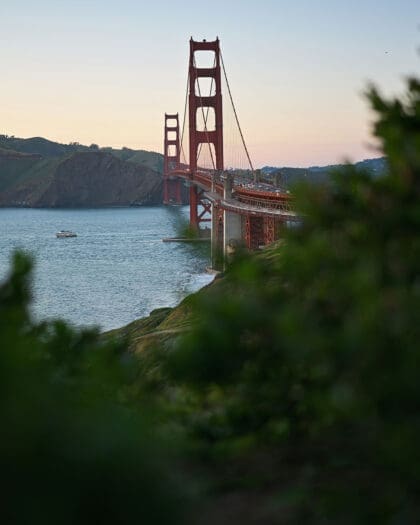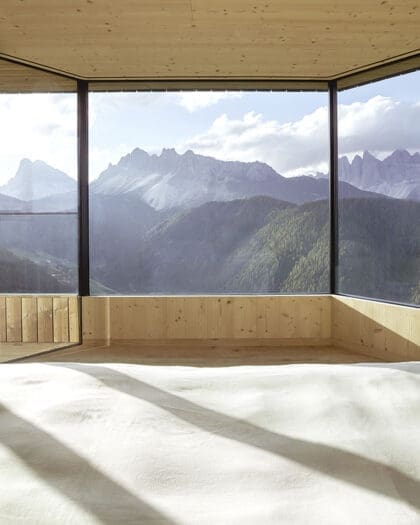
In Motion: Diving into history in Cape Town, South Africa
Freediving in Cape Town reveals the city’s complex history, and the grassroots organisations working towards a more sustainable, inclusive future
There’s something poetic about diving into the water to gain a deeper understanding of a place. During the era of maritime exploration in 1652, the Dutch East India Company settled in Cape Town to provide a refuelling station for ships. Known then as the ‘Tavern of the Seas’, the city sits at the southern tip of the African continent, and its history is intrinsically woven with its two fringing forces: the Atlantic and Indian Oceans. From its raw surf and hidden alcoves, to the shipwrecks embalmed in history on the seabed, there is perhaps no better way to discover Cape Town than through its icy waters.
I begin on the Atlantic Seaboard, in a neighbourhood aptly named Sea Point. Unable to sleep due to jet lag, I warm up with an early morning run along the promenade, before taking a frosty dip at the tidal pools around Saunders Rock. The frigid temperatures send a shock through my system, jolting me awake. The promenade, or ‘The Prom’ as it’s referred to, would not look out of place in a Californian beachside town. It is a lively spot in the summer, bustling with endless Capetonians out on bicycles, families pushing strollers, and couples linking hands in the sun.
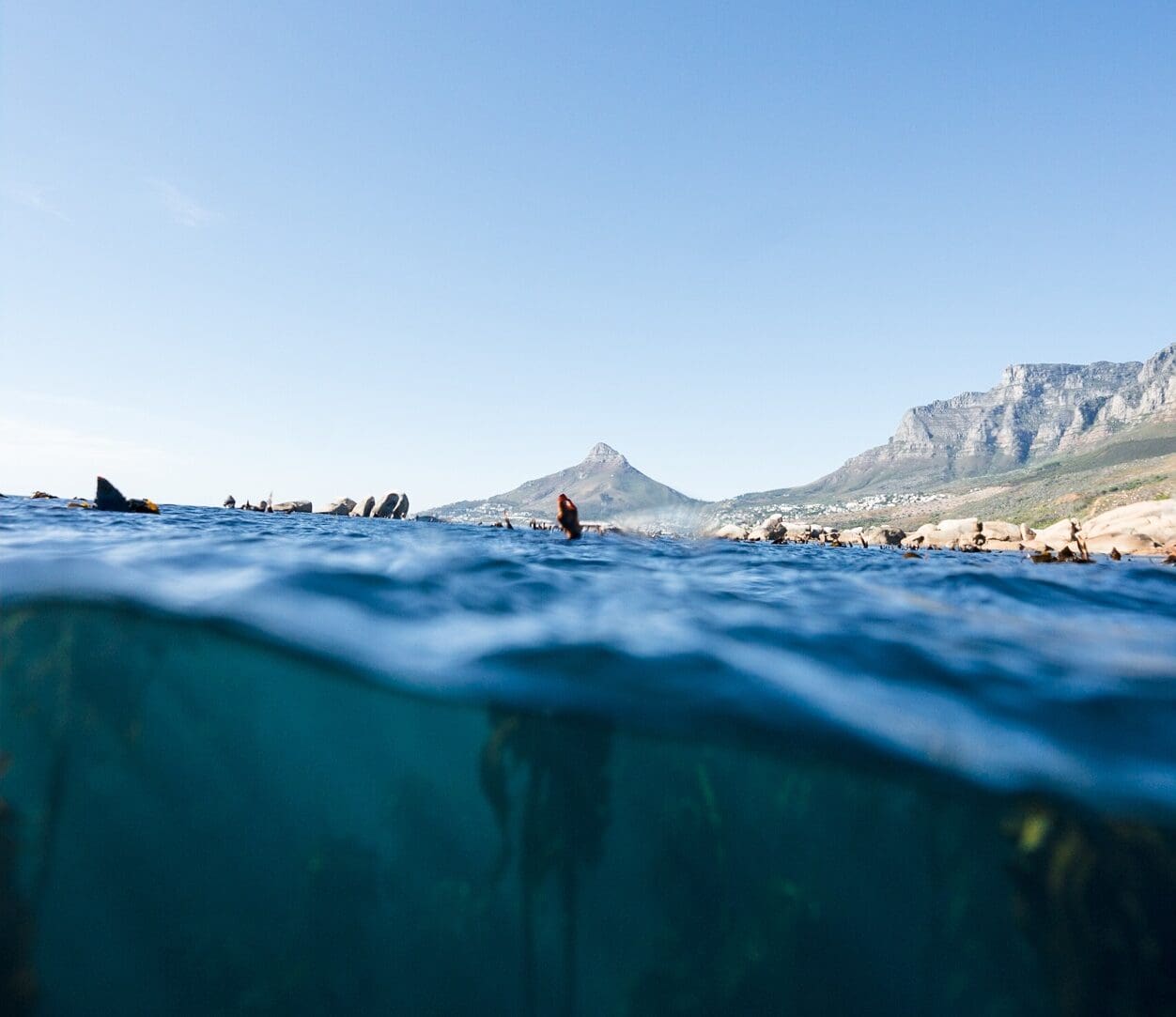
Delightfully, I discover a coffee and pumpkin donut special at Scheckter’s Raw, a vegan cafe at Sea Point. My bliss is interrupted by sudden rain and I seek shelter beneath the awning of a cafe. The wind is howling, the sky tempestuous. They don’t call it the Cape of Storms for nothing. I imagine countless shipwrecks littering the sea floor around the coast, stories of maritime history buried beneath the waves. Then, as if a switch has flipped, golden sunshine breaks through the clouds, and the world is lit up with that unique sort of renewed clarity reserved for right after rain. Maybe I’ve always been drawn to Cape Town for her temperamental, unpredictable moods.


I learn there’s indeed a shipwreck just around the corner – off the world-famous beaches of Clifton. After the first world war, bungalows were built for returning soldiers along the coast, tucked against bluffs crumbling into the sea. They later became home to The Sixtyers, South Africa’s literary bohemia that included André Brink, Breyten Breytenbach, and the country’s answer to Sylvia Plath, Ingrid Jonker. Nowadays, the properties are some of the most expensive in the city, and frequent comparisons are made to Malibu and the French Riviera. Mere metres off this luxurious coastline lies the wreck of the São José, only uncovered some 200 years after its demise in 1794. On its voyage from Mozambique to Brazil, the Portuguese ship was carrying a cargo of 500 enslaved Africans when it struck a rock and sank. More than two hundred people drowned with the ship. The archaeological site’s proximity to Clifton is dizzying, two worlds juxtaposed, two timelines side by side.
I imagine countless shipwrecks on the sea floor, stories of maritime history buried beneath the waves
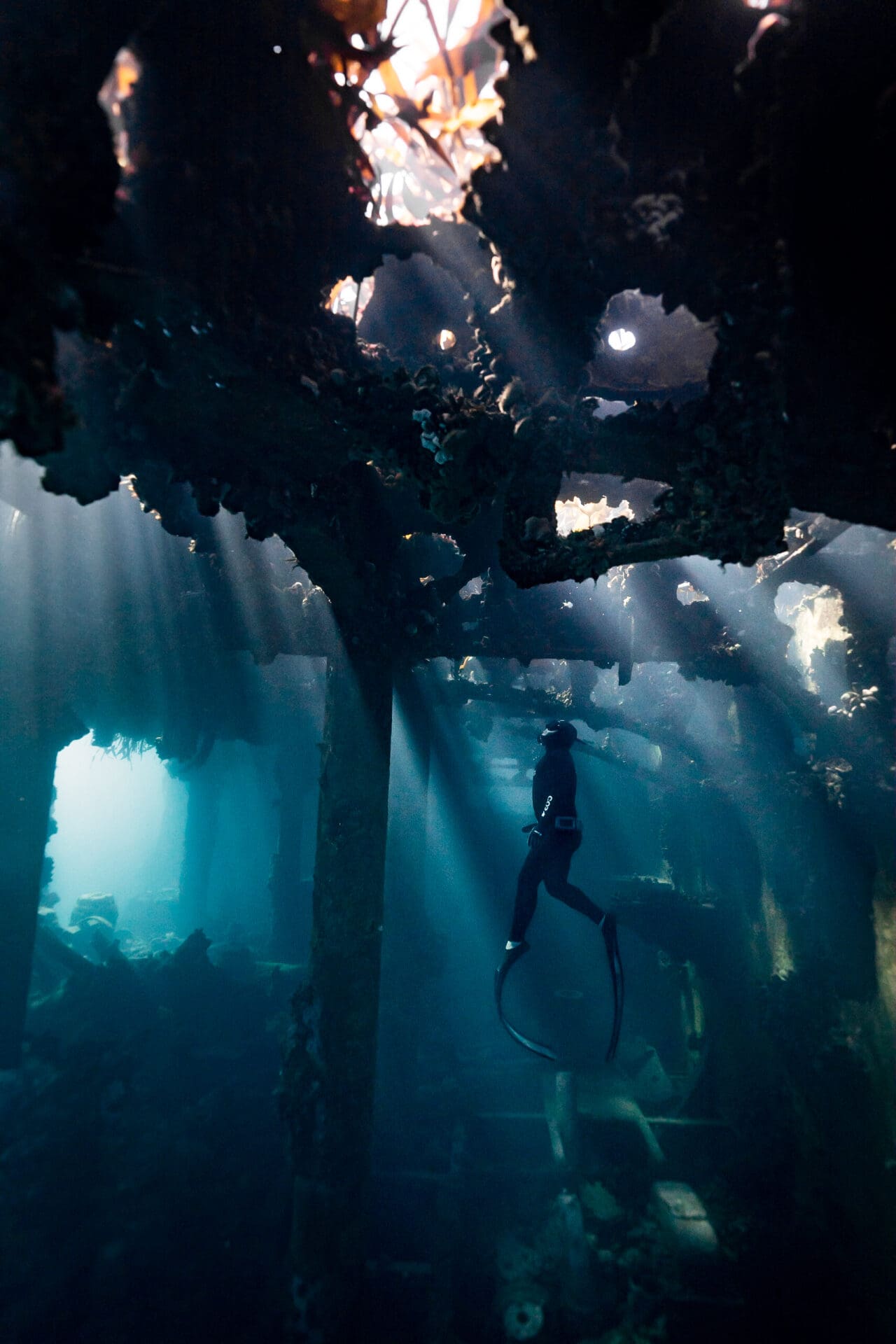
On an exploratory free dive of the nearby Antipolis shipwreck in Oudekraal Nature Park, I am joined by Zandile Ndhlovu, founder of The Black Mermaid Foundation and South Africa’s first black freediving instructor. Diving a shipwreck as a person of colour carries a different weight, she tells me. Historically, many wrecks are mass graves – sites where countless bodies perished as enslaved people were shackled to sinking ships, forever entombed in the murky depths. I blame the tightness of my wetsuit, but there’s a pressure in my chest that makes it hard to breathe. Together, we photograph a series of images that not only represent diversity underwater, but also seek to reclaim such spaces from the past for the future.

I make it to Hout Bay, home to Sentinel Ocean Alliance, an organisation that provides environmental education for youth in coastal communities, before driving past the suburban vineyards of Constantia to False Bay. From there, I trace the coastline south. In Muizenberg’s crumbling waves, Craig Rodney – founder of the @southafrica Instagram account – takes me surfing. A dip at Dalebrook Tidal Pool in nearby St. James is followed by seafood and stories in Kalk Bay, a fishing community with a rich heritage, including a history of Filipino immigrants who settled there centuries ago. As a Thai person in South Africa, I feel a tug of familiarity that there might be fellow Southeast Asians wandering the streets beside me.
One night, there’s an alert to the presence of bioluminescence in the bay. Led by Mogamat Shamier Magmoet (co-founder of Sea The Bigger Picture, a non-profit focused on environmental education) and joined by wildlife filmmaker Naudé Heunis, we head to Fish Hoek to swim in the blue glow. I scuba dive with Pisces Divers in Simon’s Town and follow the routes of My Octopus Teacher (2020) in the great African sea forests of Miller’s Point with Cape Town Freediving. I learn to forage for coastal ingredients from Roushanna Gray of Veld and Sea – a female chef who follows the methods of indigenous hunter-gatherers known as Strandlopers – at Smitswinkel Bay, down to the tip of the Cape Peninsula.
In False Bay, the water is a few degrees warmer and the pace of life slower. There’s a sense that history lingers in the air – that its fingers have left bruises and imprints on the communities that have yet to heal. But people are working hard to rectify that. Multiple grassroots organisations seek to empower future generations to learn about their history with the water, and to care about the seas. They encourage Cape Town youth – often kids of colour – to discover the ocean for themselves, reconnect with their roots, and to care for the marine environment. After all, in a place where the history of slavery is clearly visible, and segregation in the 1950s caused the displacement of whole communities, access to the sea has been a legislative privilege not afforded to all. In a city defined by water, little has been explored in mainstream media about the region’s people of colour and their relationship to it.
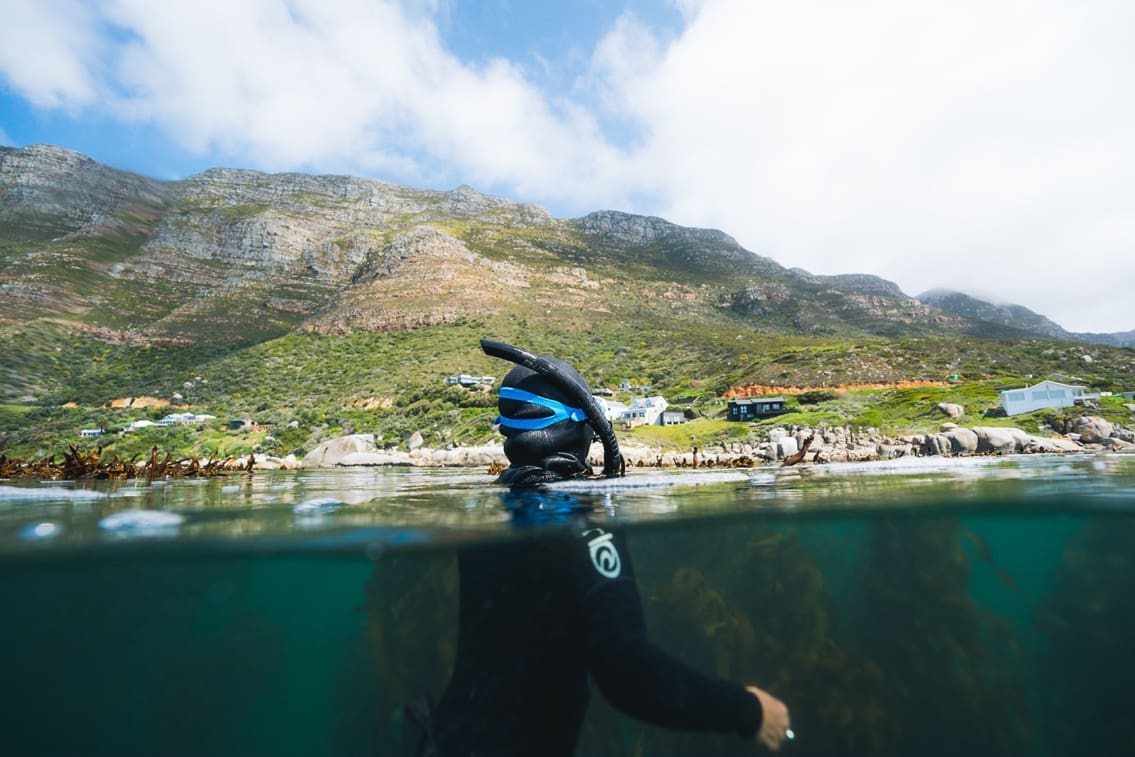
As I wander Kalk Bay early one morning, there is the distinctive stillness of solitude. The tourists haven’t arrived yet, and I’m accompanied only by the briny tang of salt, the squawk of seagulls, and the grunts of seals lounging around the harbour. I pass glassy storefronts shimmering in the dawning light, reflecting the Hottentots Holland Mountains across the bay, their jagged ridges tapering into the drama of Cape Hangklip. A South African friend later tells me they learned to dive there: “Save for the odd poacher, I used to see it as this idyllic little cove brimming with crayfish and perlemoen. It wasn’t until years later that I learnt it had been the site of one of the largest settlements of runaway slaves who hid in the nearby caves. The area holds a different meaning when I dive it now.”
What stories lie behind these faces, behind each new place discovered? Looking out at the blue of the sea, a deep longing pulls at my core. It feels like the concept of transience has been embedded into the fabric of Cape Town since it was founded centuries ago as a refuelling station for ships on their journey to elsewhere. “Blue is the colour of longing for the distances you never arrive in, for the blue world,” Rebecca Solnit once wrote.
Something in the salty air alludes to impermanence, to melancholy – a tinge of lost hopes and dreams sweeping through this frontier town at the bottom of the earth. There’s a yearning in my heart and a profound curiosity for this country. I feel the layers of history embedded in the blue, the poignancy of the place, a sense of the sublime. The liquid tributaries run through the sprawling city and its melting pot of a thousand cultures – indigenous peoples, European settlers, smuggled slaves and the waves upon waves of immigrants. It is the connective tissue between worlds, the arteries that give blood to these communities.

The best places to stay in Cape Town
Beginning on the Atlantic Seaboard, Mojo Hotel is a great place to start your trip. It is situated right above the bustling Mojo Market, in the coastal neighbourhood of Sea Point, within walking distance of countless restaurants, cafes, and tidal pools, with views overlooking the promenade and ocean.
For a five-star experience and stunning views of Hout Bay, head to Tintswalo Atlantic. Take a scenic drive along Chapmans Peak, volunteer at Sentinel Ocean Alliance, and watch surfers carve up the waves at nearby Kommetjie or Muizenberg. Also be sure to check out the Chefs Warehouse restaurant on site for a divine culinary experience.

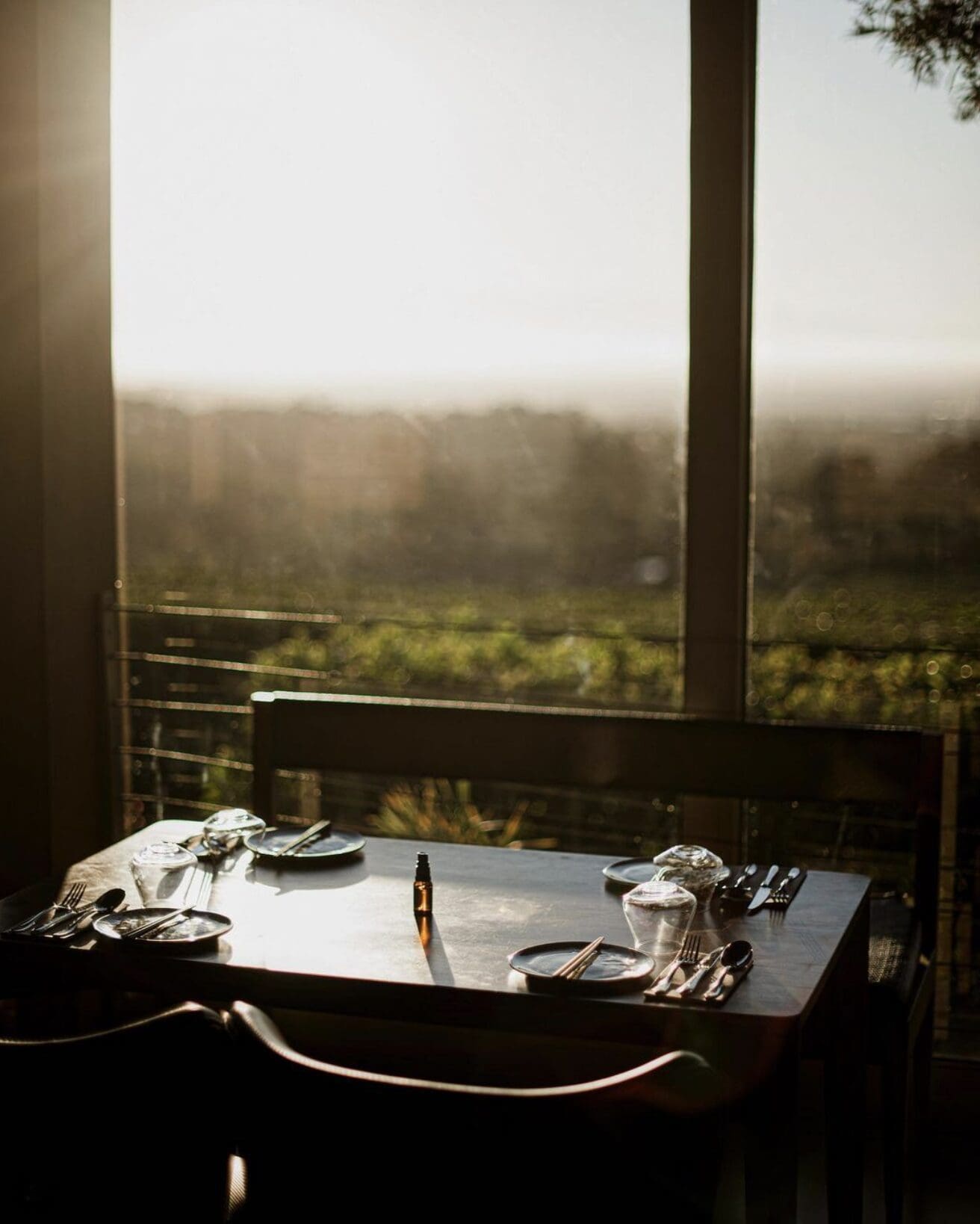
Last but not least, for those looking for a more down-to-earth experience, look no further than the rustic Veld and Sea Surf Shack. A refurbished caravan in an indigenous plant nursery on the Cape Peninsula, this is a home for the adventurous, and for those looking for quiet and solitude. And as it’s a Veld and Sea property, be sure to indulge in one of their renowned workshops.



